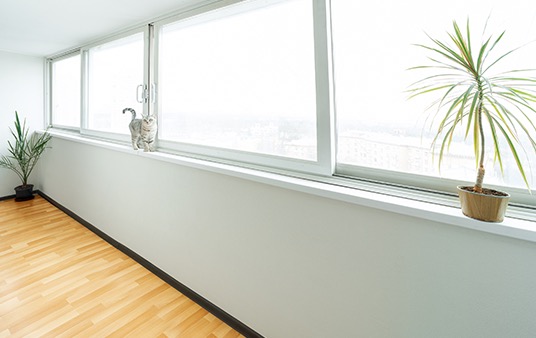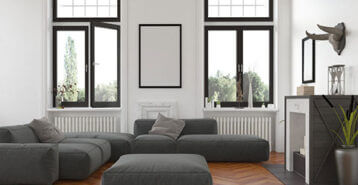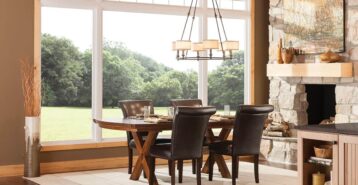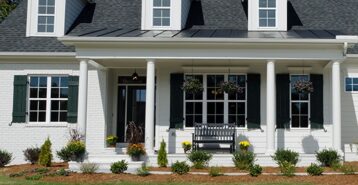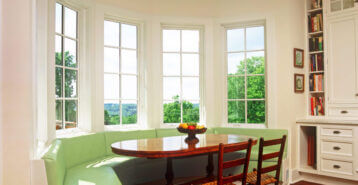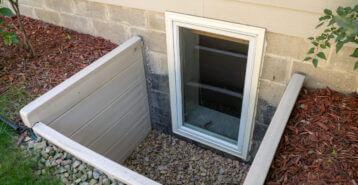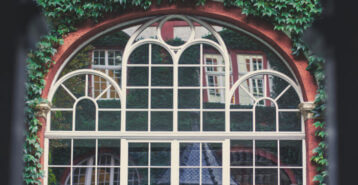What Is a Sliding Window?
Sliding windows, also called glider windows, open horizontally, sliding from side to side instead of up and down. They are one of the most popular types since they can be large enough to function as sliding glass doors out onto a patio and small enough to fit above tubs and showers.
Looking for vertical sliding windows instead? Then you want either a single-hung or double-hung window.
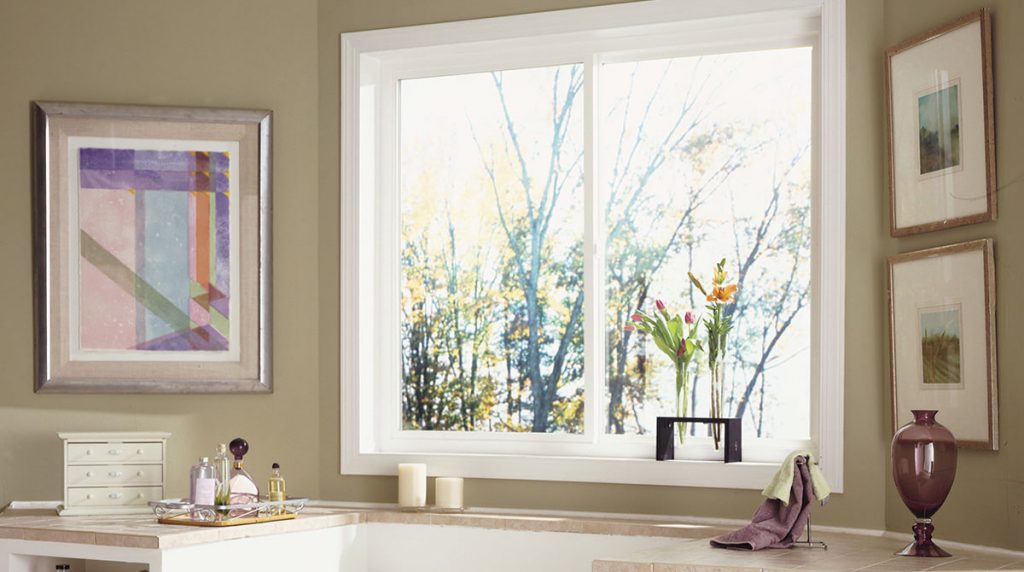
Who Should Consider Sliding Windows?
When you live in a home with shorter ceilings/walls, double-hung windows or casement windows can wind up taking nearly all the wall space. This is not always aesthetically pleasing and can make the room seem smaller. Sliding windows fit horizontally instead, so they make the room seem taller.
This type of window fits best in these areas:
- Small spaces where you need light or ventilation, like bathrooms.
- Long walls, like hallways or bedrooms.
- Awkwardly sized spaces. Sliding windows come in many sizes.
How Much Do They Cost?
The national average cost for sliding windows varies from $775 to $1,652. The size, frame type, glass type, and manufacturer you choose will impact your own project cost. To learn more, visit our guide to sliding window prices.
Types of Sliding Windows
- 2-Lite: These windows have two pieces of glass, and one sash slides closed over the other, which remains stationary.
- 3-Lite (or More): A 3-lite window is typically longer than its 2-lite counterpart. It has a piece of glass in the center with moveable sashes on either side. The moveable sashes most often slide in toward the stationary center.
- Single- or Double-Sash: In a typical sliding window, only one sash moves. However, some windows can have both sashes move to maximize your ventilation.
- Frame Materials: Your window’s frame material will determine not only the color and style options you choose but the price as well as how insulated your window will be. You can check out our guide to the best window frame materials to learn more.
Alternatives
Homeowners shopping for sliding windows tend to compare them against two other types: casement and double-hung. All of these windows offer excellent ventilation, but they each have unique pros and cons to consider.
You can read our guides to casement or double-hung windows vs sliding options.
Sizes
Sliding window sizes will vary depending on how large of a sliding glass window pane you want to install. These windows can come in smaller sizes for bathrooms or larger sizes for living room areas. They range in size from a horizontal width of 36 to 84 inches, and a height of 24 to 60 inches.
Our guide to sliding window sizes can show you all the standard sizes available from manufacturers.
Parts
Sliding windows rely on simple mechanics to open and close, making them easier to operate and less likely to break. Here are the four main parts:
- Sash: The sash is the movable part of the window that holds the glass pane. In this window type, there are typically one or more sashes that slide horizontally.
- Frame: The frame is the outer structure that encloses the window and holds the sash or sashes. It’s typically made of materials like wood, vinyl, aluminum, or fiberglass.
- Glass pane: Glass can vary in type, including double-glazed for better insulation, tempered for safety, or tinted for reduced glare and UV protection. Check out all the window glass types you can choose from.
- Tracks: These are the grooves or paths in which the sash slides. In horizontal options, there are tracks at the top and bottom, and sometimes there are rollers to help the sash glide smoothly along it.
Sliding Window FAQs
Are They Easy to Maintain? Do They Require Repair Often?
Because sliding windows are so simple in design, they tend to outlast other types of windows. They do not break often or suffer from most of the common issues that you will see in other windows. Worn out hardware is not common. Maintaining the windows is as simple as lubricating the slides once and awhile and vacuuming dirt.
Can I Use Sliding Windows in Basements for Egress?
Yes, they’re a popular choice and make our list for best basement windows. Be aware of egress size requirements and ensure whichever window type you choose meets building codes.
Now That You Know All About Sliding Windows, What’s Next?
You have a few options about where to go from here.
- If you’re not sure this is the right window type for you, you can check out the other home window types or you can review our window replacement guide to find links to the best window brands, our window buying guide, and more.
- You can check out our price guide to start budgeting for your project.
- If you want to start getting quotes or looking for contractors, you can use our contractor directory to compare pros in your area.
If the time or energy finding a contractor requires feels overwhelming, Modernize can handle it for you. We will match you with up to four pros in your area.
